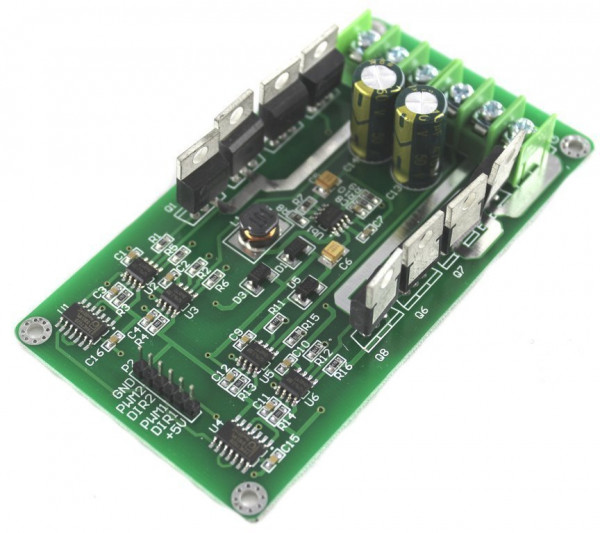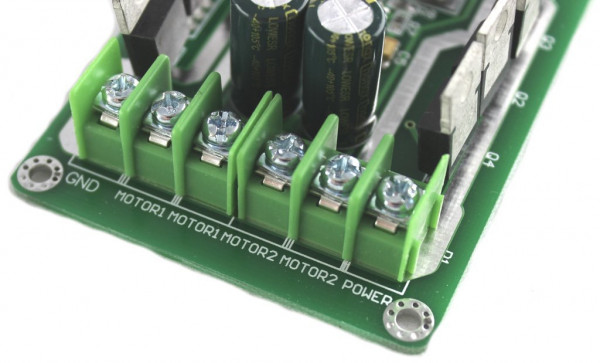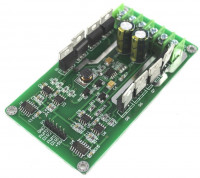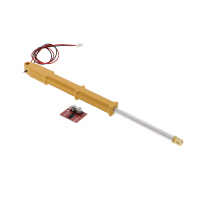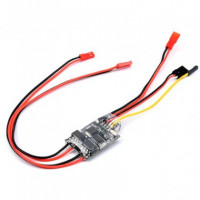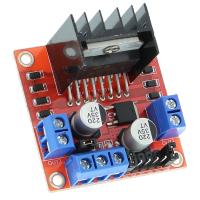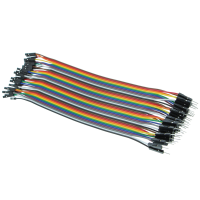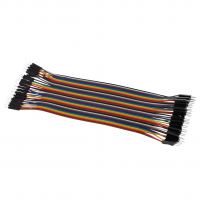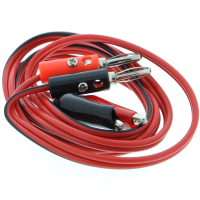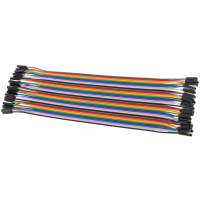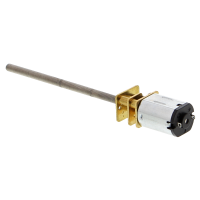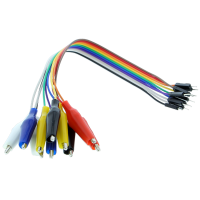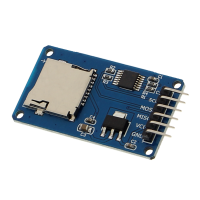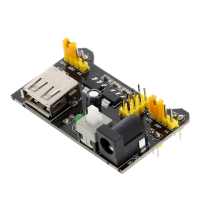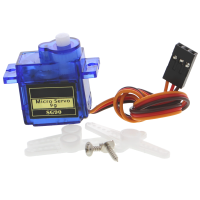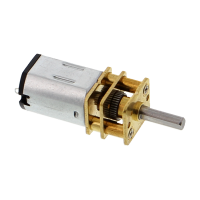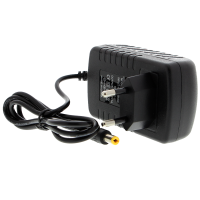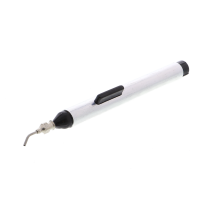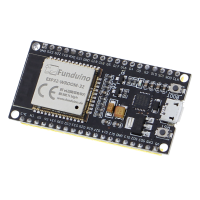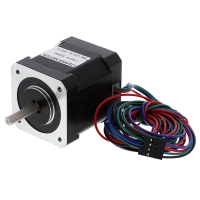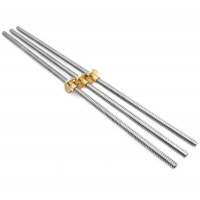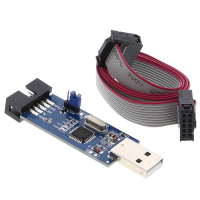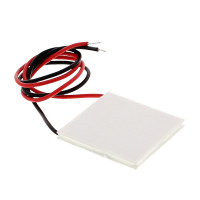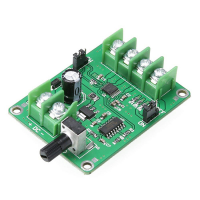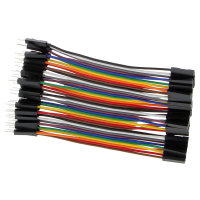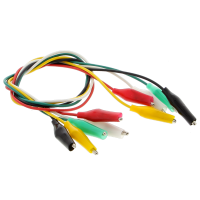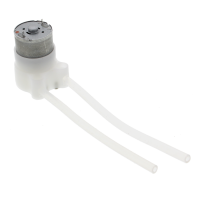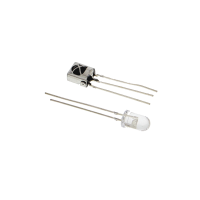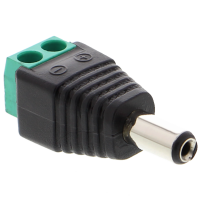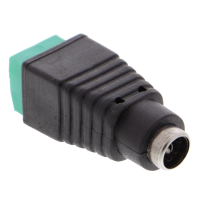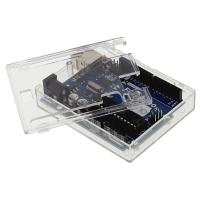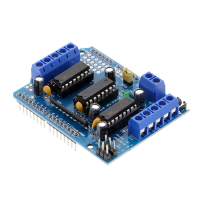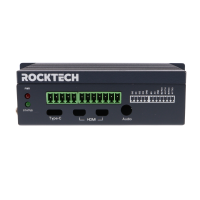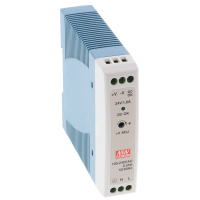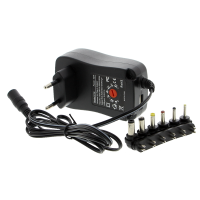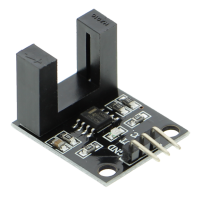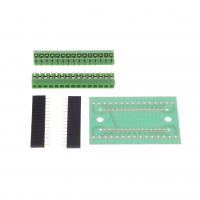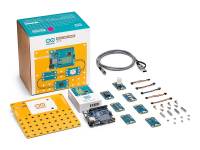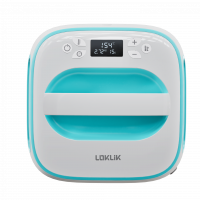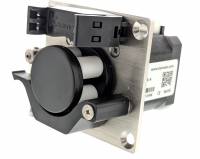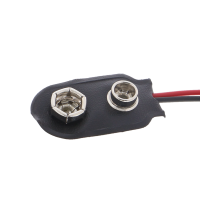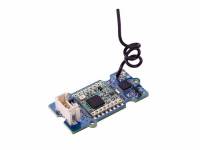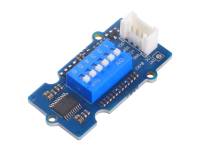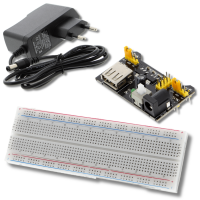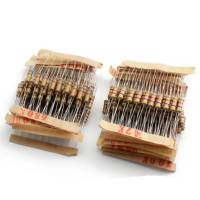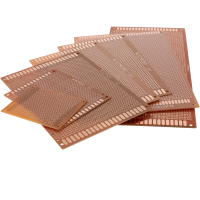30A H-bridge with IRF3205 MOSFET transistors
- Item no: F23108636
- Weight: 0,06 kg
- Packing dimensions: 10.8 cm x 6.5 cm x 2.2 cm (L x W x H)







Overview:
- the drive performance of these ICs is comparable to that of the L298, with the drivers focusing on current and efficiency, effectively utilizing motor power and battery life
- can withstand high current load, max. current up to 30A
- Drive with braking function
- the driver uses a full two-chip half-bridge driver chip and a very low impedance N-channel MOSFET.
- MOSFET with N-channel IRF3205 MOSFET
- Motor forward: DIR = 1 PWM = PWM
- Motor reverse: DIR = 0 PWM = PWM
- Parking brake: DIR = X PWM = 0 (X is any state)
- POWER is connected to the positive pole of the power supply unit and GND to the negative pole of the power supply unit
- Area of application: Various control circuits for DC motors
Product performance parameters:
- max. current : 30A
- Voltage : 3V - 36V
- Rated current: 10A
- Peak current: 30A
- Dimensions : approx. 110 x 60 x 25 mm
- Weight : approx. 51 g
Scope of delivery:
- 1x 30A H-bridge with IRF3205 MOSFET transistors
Instructions for use:
High-current full-bridge drive for DC motors, specially developed for robotics competitions:
This driver significantly outperforms conventional motor drive chips such as the L298 in terms of performance. The focus is on high current flow and efficiency to effectively maximize motor performance and battery life. The driver can handle high overload currents, with a maximum current of up to 30A.
In addition, this driver has a braking function that can stop the motor quickly. Braking is quick and noticeable, and the function is easy to operate.
The driver uses two full half-bridge driver chips and N-channel MOSFETs with extremely low internal resistance.
The full half-bridge driver chips provide a reliable driving method that minimizes the switching losses of the MOSFETs and improves the energy utilization of the power supply. The MOSFET driver chips have an integrated hardware braking function and an energy recovery function.
This driver overcomes the limitations of conventional power ICs, which often have a low power margin, as well as the complex timing and complementary drive challenges of other half-bridge combinations.
The MOSFET utilizes the N-channel IRF3205 MOSFET. Two special half-bridge driver chips are used, with the upper transistors driven by bootstrap capacitors. This ensures that the upper transistors receive sufficient drive voltage to open the MOSFET channels quickly, which improves the acceleration of the motor and at the same time enables fast braking. This allows the vehicle to both start and stop quickly.
The driver can operate with a PWM duty cycle of 0% to 99%, providing the motor with sufficient drive voltage.
Control signals:
Control of the motor:
- Motor forward: DIR = 1, PWM = PWM
- Motor reverse: DIR = 0, PWM = PWM
- Stopping and braking the motor: DIR = X, PWM = 0
Connection of the motor and power supply:
- POWER is connected to the positive pole of the power source, GND to the negative pole of the power source.
- The two motors are connected to MOTOR1 and MOTOR2 respectively.
Test instructions: (For customers using Arduino or STM32 microcontrollers, please note that these microcontrollers have a longer initialization time. It is recommended to connect a 2K pull-down resistor each to PWM1 and PWM2)
1. Check the PWM signal: This step is very important. Before testing the driver board, first use an oscilloscope or multimeter to make sure that the PWM signal you are providing is correct. Do not take this step lightly, but make sure first. The method for checking is as follows: If you are using an oscilloscope, you can see the PWM signal directly on the screen. With a multimeter, you can calculate the voltage based on the duty cycle of your PWM signal. For example: At a high level state, the microcontroller port will output 5V. With a PWM of 60%, we should measure an output voltage of 3V at the PWM output with the multimeter (5V * 60% = 3V). Adjust the duty cycle and check that it corresponds to the appropriate changes. It is also recommended to set the PWM to 0 at the start of the main program.
2. After completing the first step, the driver board can be tested: Do not connect the motor at first. Enter the other signals and voltages as normal. Use a multimeter or oscilloscope to test the waveform between the motor connections. For example, if we test the first line: PWM1, DIR1, +5V, GND, POWER, GND are powered normally. Use an oscilloscope to check the waveform between the two terminals of Motor1, whether the frequency and duty cycle match PWM1 and the amplitude is equal to the supply voltage. If no oscilloscope is available, you can use a multimeter to measure the voltage between the Motor1 terminals to see if it is equal to power * PWM1. If it does, proceed to the next step.
3. Once you have completed the above test, you can connect and test the motor: It is important to note that the driver can operate with a PWM duty cycle of 0% to 99% when the motor is connected so that the motor receives sufficient drive voltage. When the motor is connected, no direct high-level signal must be given and the signal must not remain open. The frequency should be between 400Hz and 20kHz.
PWM1 and DIR1 control the first motor:
- PWM1 controls the rotation speed of the motor. The PWM range extends from 0 to 99% duty cycle.
- DIR1 controls the direction of rotation: With a value of 1, the motor rotates forwards, with a value of 0, the motor rotates backwards.
PWM2 and DIR2 control the second motor:
- PWM2 controls the rotation speed of the motor. The PWM range also extends from 0 to 99 % duty cycle.
- DIR2 controls the direction of rotation: With a value of 1, the motor rotates forwards, with a value of 0, the motor rotates backwards.
Schnelle Lieferung, habe den Artikel noch nicht in Betrieb genommen. Preis/Leistung sehr gut
La carte fonctionne très bien. La livraison super rapide. Je vais bientôt la monter sur mon projet définitif.
sehr gut
Ich bin mit der Ware zufrieden. Preis- Leistung top. Superschnelle Lieferung. Vielen Dank.

